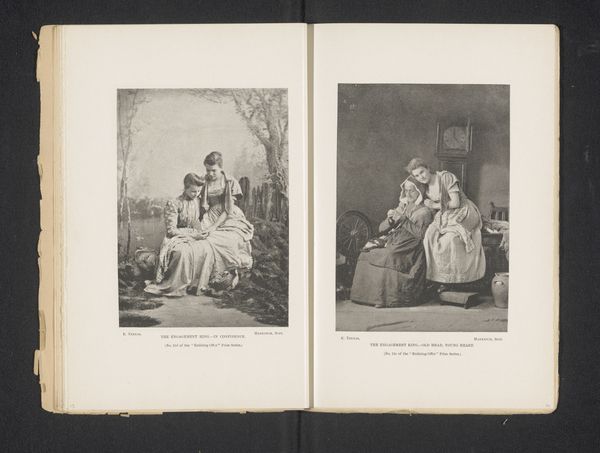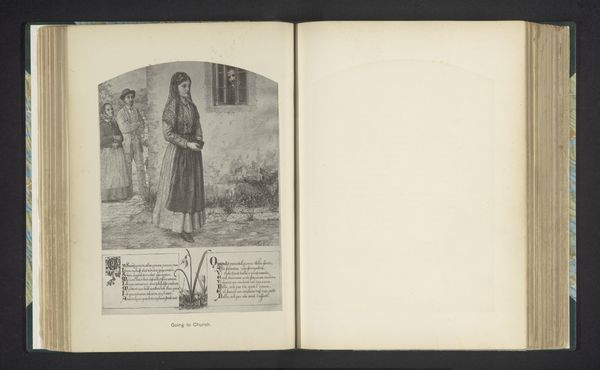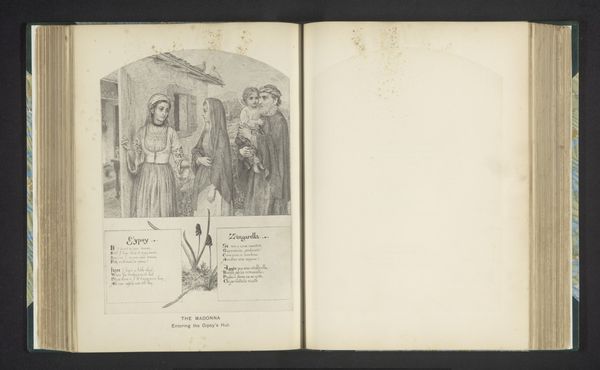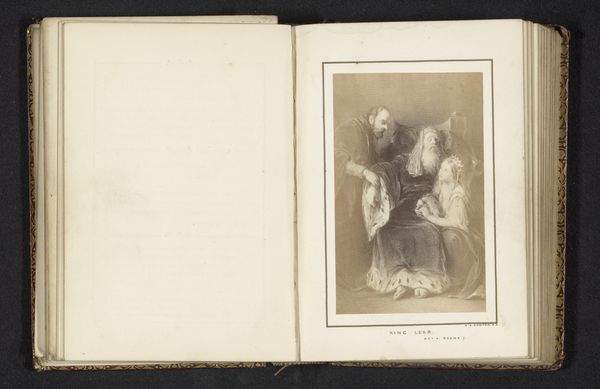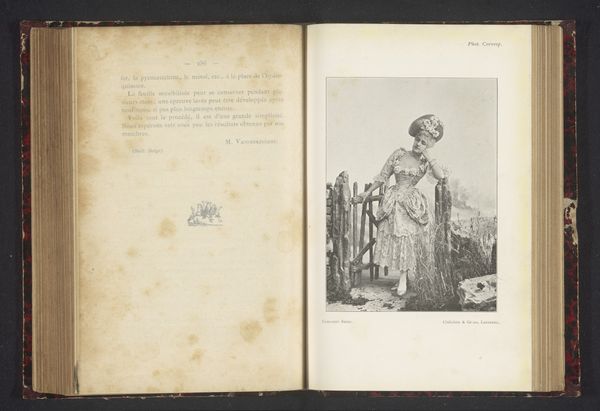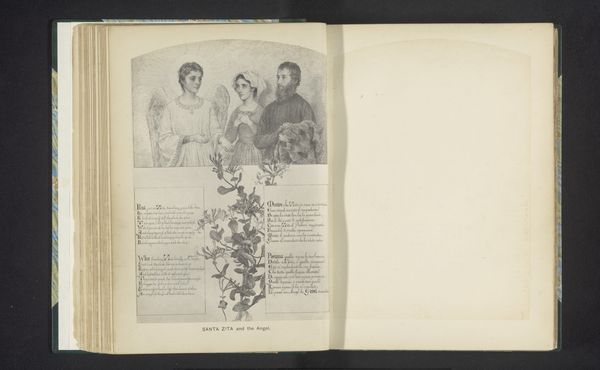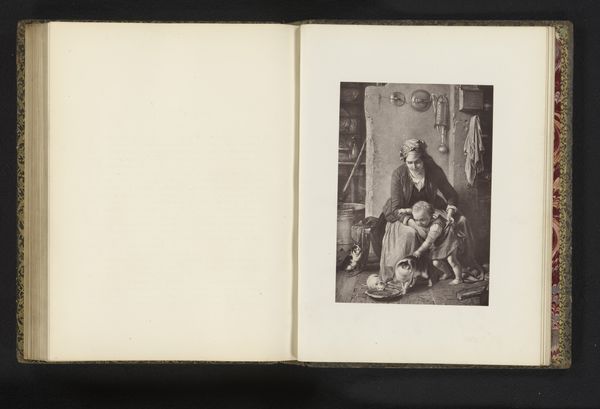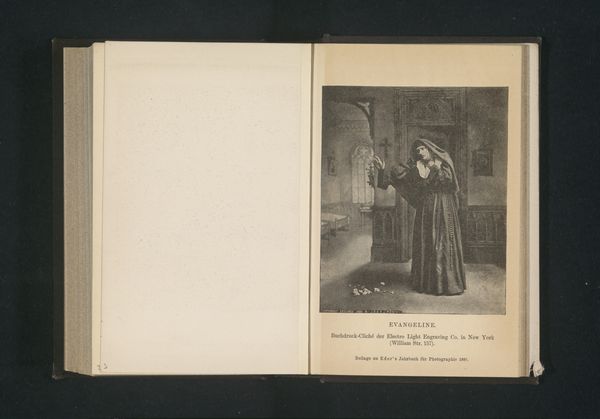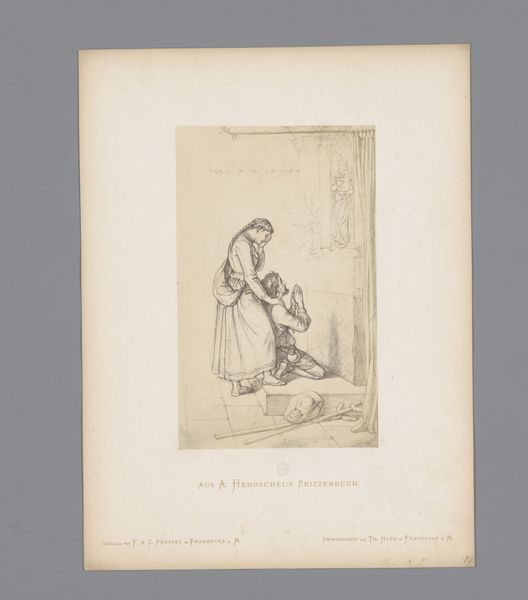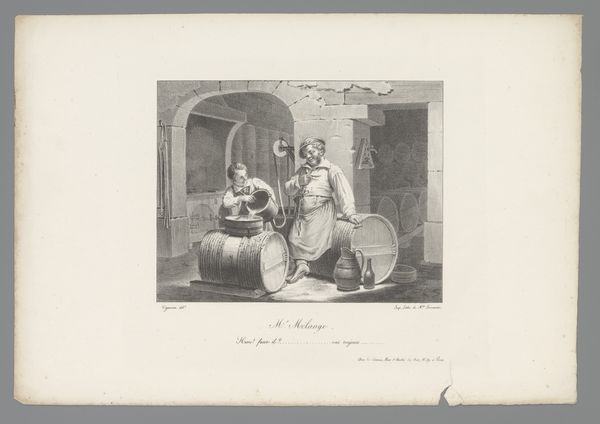
drawing, paper, ink
#
drawing
#
narrative-art
#
figuration
#
paper
#
ink
#
ink colored
#
line
#
academic-art
Dimensions: height 245 mm, width 165 mm
Copyright: Rijks Museum: Open Domain
Editor: So, here we have Frederick Hollyer's "The Madonna Teaching," a drawing in ink on paper created before 1885. It has this delicate, almost academic style. What stands out to me is how it’s presented like an open book. How do you interpret the piece and the artist's possible intentions by depicting it this way? Curator: Framing it as an open book, with facing pages and text at the bottom, really emphasizes the role of religious education. This placement creates an interesting dialogue between image and the institutionalized knowledge it represents. Editor: A dialogue? That's an interesting way to see it! Curator: Think about the Victorian era, the time this was created. Hollyer, known for his photographic reproductions, presents a rather idyllic scene of instruction. But is it actually? Who is the audience, and what lessons about female virtue and domesticity are being subtly reinforced within the social expectations of that period? Editor: So it's not just a nice religious image, it's actually reflecting certain societal expectations about women? Curator: Exactly! Consider also, the original work was not widely accessible. As a photograph, its value resided in reproduction. Hollyer played a pivotal role in disseminating artistic images, impacting public taste, artistic training, and notions of the fine art canon itself. How accessible were works of art to the general public before affordable reproductions became commonplace? Editor: Wow, I never thought about how its method of distribution impacted how people consumed it. Curator: Art exists not in a vacuum but within specific cultural, social, and economic structures. What seemed initially a pious image then opens up into wider, and perhaps less pious, fields. Editor: I see that! It definitely changes the way I perceive its value. I've certainly learned a lot about its history. Thanks! Curator: My pleasure. Examining art's societal roles makes the experience richer, and makes us better art appreciators!
Comments
No comments
Be the first to comment and join the conversation on the ultimate creative platform.

